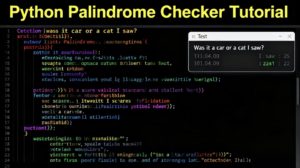Overview, Historical Timeline, Problems & Solutions
An Overview of Python Class Instances
What is a Python class instance?
You use a class to describe how something should work. When you call that class, you create a class instance. A Python class instance is an object made from a class. It has its own space for values and actions.
When you write Dog(), you call the Dog class. Python runs the __init__ method to set up the object. The result is a new class instance. You can store it under a name like my_dog. You can give it values like my_dog.name = "Spot".
Python lets you create new objects by calling a class.
class Dog:
def __init__(self, name):
self.name = name
my_dog = Dog("Spot")
print(my_dog.name)
# prints: Spot
How does Python store attributes in a class instance?
Each Python class instance has a name space. This is a place where it keeps values. The name space is a dictionary. You can see it with __dict__. When you ask for my_dog.name, Python looks in the instance name space. If it does not find the name there, it checks the class.
Python uses the instance’s name space to hold its values.
class Dog:
kind = "canine"
my_dog = Dog()
my_dog.name = "Fido"
print(my_dog.name)
# prints: Fido
print(my_dog.kind)
# prints: canine
print(my_dog.__dict__)
# prints: {'name': 'Fido'}How does Python find methods for a class instance?
When you use a method like my_dog.bark(), Python finds the method in the class. If it is a user-defined function, Python wraps it as a method. It adds the instance as the first argument.
Python wraps class functions as methods when called from an instance.
class Dog:
def bark(self):
return "Woof!"
d = Dog()
print(d.bark())
# prints: Woof!The self in bark(self) refers to d. Python adds d as the first value when you call d.bark().
Can a class instance act like a function or a list?
Yes. A Python class instance can pretend to be many things. If the class has a method called __call__, then you can call the instance like a function. If the class has methods like __getitem__, it can act like a list or mapping.
Python lets class instances act like functions if they define call.
class Greeter:
def __call__(self, name):
return f"Hello, {name}!"
g = Greeter()
print(g("Ada"))
# prints: Hello, Ada!A Historical Timeline of Python Class Instances
Where do Python’s class instance rules come from?
Python class instances come from object-oriented design. Early languages shaped how objects store data, run code, and act like built-in types. Python made this clear, flexible, and easy to use.
People designed systems that use object types
1967 — Simula class instances Simula introduced the class instance as a runtime object with its own data.
1980 — Smalltalk instance messaging Smalltalk let objects send messages (method calls) to each other.
People shaped Python’s model
1991 — Python 0.9.0 adds classes and instances Python supports class-based design with method lookup and instance storage.
2000 — Python 2.2 adds new-style classes Python lets all classes inherit from object, unifying method handling and special methods.
People expanded what instances can do
2001 — Special methods improve instance behavior Python 2.2 supports rich comparison, iteration, and numeric emulation.
2010 — Class decorators and descriptors Python 3 makes it easier to control instance setup and property access.
People kept Python instances simple and predictable
2020 — Stable instance design Python maintains backward compatibility for instance handling, keeping it simple and open.
2025 — Minimal changes Python keeps the instance rules unchanged to protect reliability.
Problems & Solutions with Python Class Instances
How do you use Python class instances the right way?
Python class instances help you make objects that store data and perform actions. Each instance has its own values and can act in special ways. These problems show how Python class instances solve real needs in your code.
Problem: How do you store different values for different objects in Python?
You are making a game. Each player has a name and a score. You want each one to keep their own values.
Problem: You need a way to create many objects that share the same structure but hold different data.
Solution: Use a class to define the structure, then make a new instance for each player.
Python lets you store values in each instance.
class Player:
def __init__(self, name, score):
self.name = name
self.score = score
p1 = Player("Ada", 10)
p2 = Player("Bob", 20)
print(p1.name, p1.score)
# prints: Ada 10
print(p2.name, p2.score)
# prints: Bob 20Each object has its own name and score. The class makes this possible.
Problem: How do you run actions on stored data in Python?
You have a counter that tracks how many times a user clicks. You want to make it easy to add one to the total.
Problem: You need a way to store data and run actions on that data.
Solution: Put the data in an instance and write a method that changes it.
Python lets you add methods to change instance data.
class Counter:
def __init__(self):
self.count = 0
def click(self):
self.count += 1
c = Counter()
c.click()
c.click()
print(c.count)
# prints: 2The method uses self to change the object’s value. Each instance keeps its own count.
Problem: How do you share behavior across many objects in Python?
You have many shapes in a drawing tool. Each one has a color. You want all shapes to support a paint() action.
Problem: You need to give many objects the same method without repeating code.
Solution: Use a class to define the method, then make instances that share it.
Python lets you define shared methods in the class.
class Shape:
def paint(self, color):
self.color = color
s1 = Shape()
s2 = Shape()
s1.paint("blue")
s2.paint("red")
print(s1.color)
# prints: blue
print(s2.color)
# prints: redEach instance runs the same method but stores its own value.
Problem: How do you make objects act like built-in types in Python?
You want a custom object that behaves like a list but tracks every access.
Problem: You want your class instance to respond to [] like a list.
Solution: Define __getitem__ and __setitem__ to handle index use.
Python lets class instances act like lists with special methods.
class SpyList:
def __init__(self):
self.data = []
def __getitem__(self, i):
print(f"Getting item {i}")
return self.data[i]
def __setitem__(self, i, value):
print(f"Setting item {i} to {value}")
self.data[i] = value
s = SpyList()
s.data.append("a")
s[0] = "b"
print(s[0])
# prints:
# Setting item 0 to b
# Getting item 0
# bThe instance looks and acts like a list but adds new behavior.
Problem: How do you track object state over time in Python?
You want to make an object that can run when called, like a small tool.
Problem: You need an object that can accept arguments and return results like a function.
Solution: Add a __call__ method to your class.
Python lets class instances act like functions.
class Adder:
def __init__(self, base):
self.base = base
def __call__(self, x):
return self.base + x
add5 = Adder(5)
print(add5(3))
# prints: 8The object runs like a function because it defines __call__.


